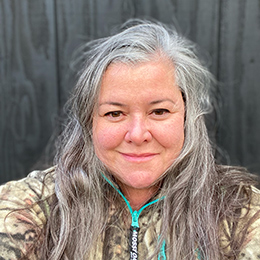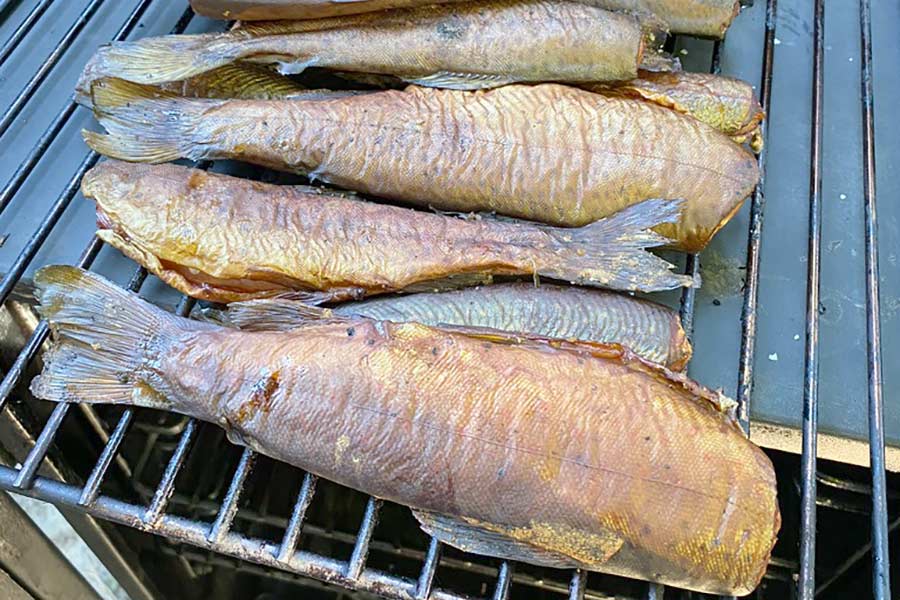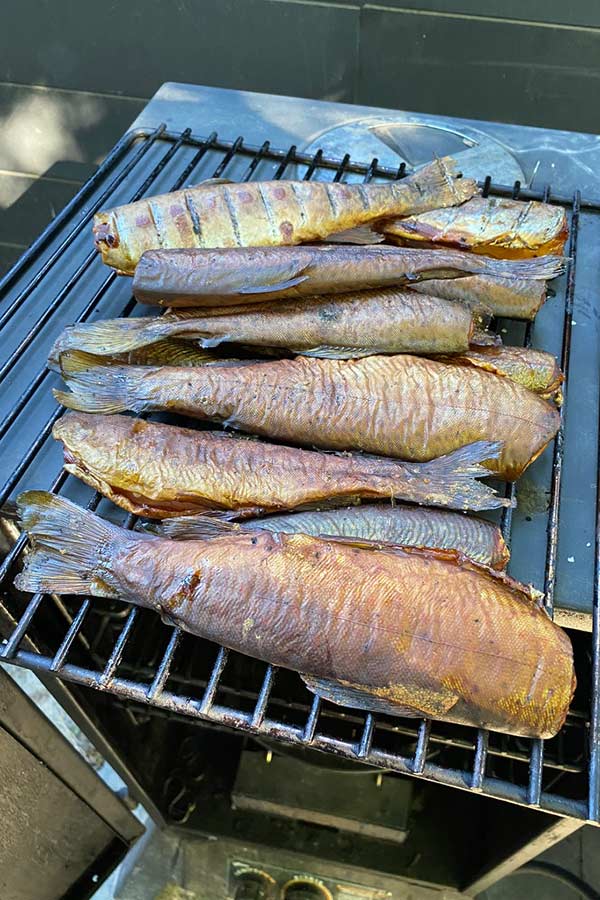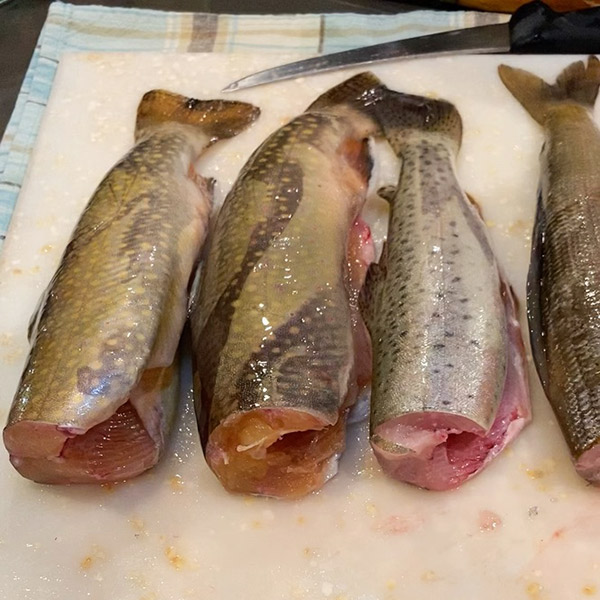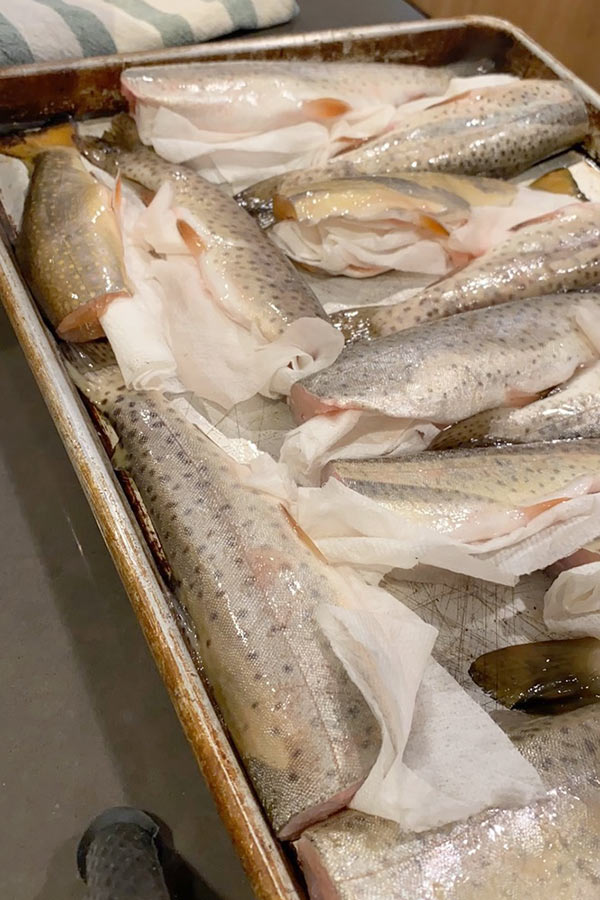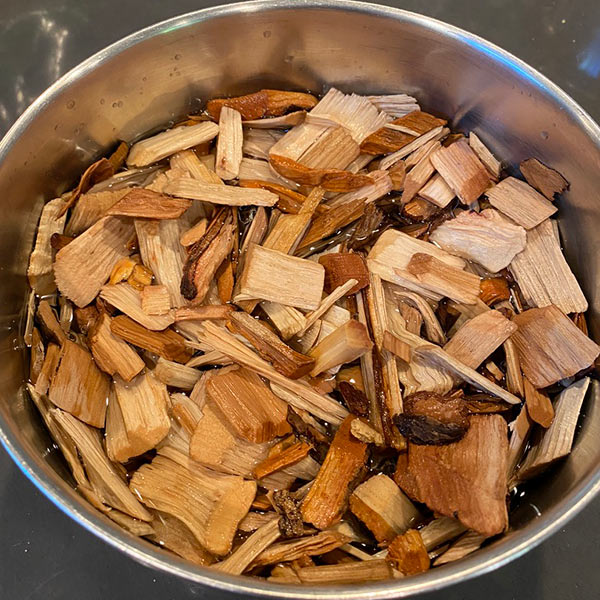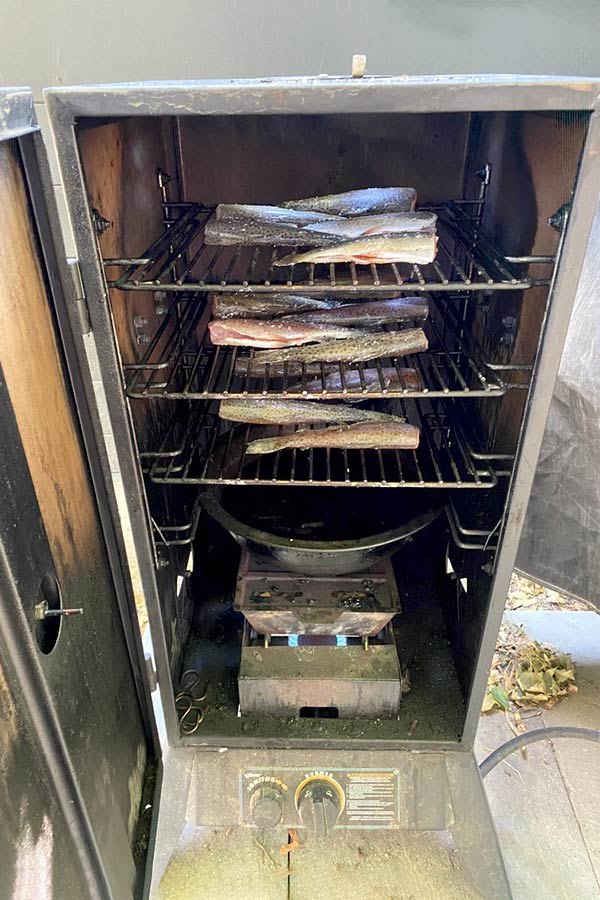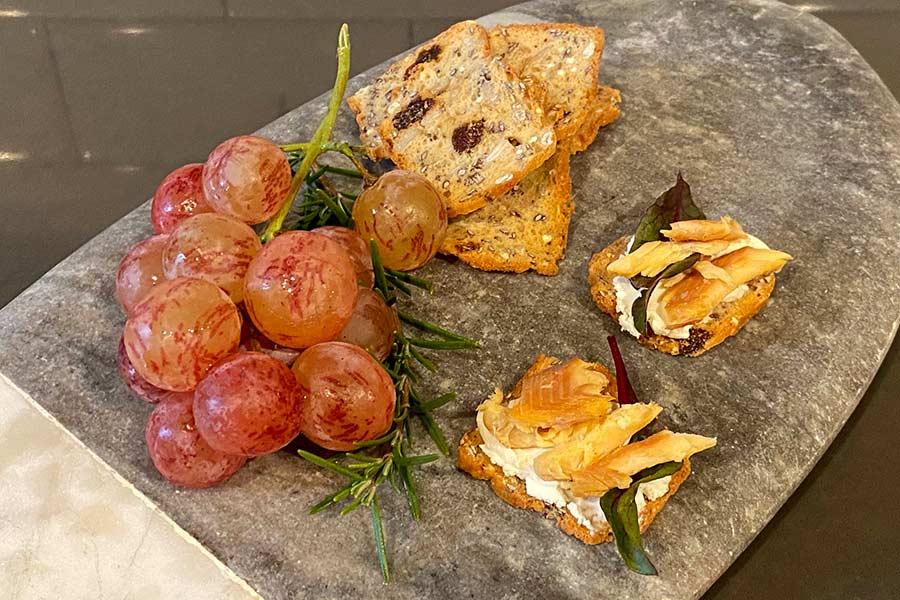Smoked trout
A versatile preparation for fish that tastes great any time of year
By Darby Doyle
Technical Writer
DWR Conservation Outreach Section
Think of this preparation as more of a method than a recipe. And smoking — especially for delicate foods like trout — is more of a subtle art form than a set of hard-and-fast rules. Make sure to plan time for the fish to brine for 4–12 hours, and then rest in the refrigerator for 4–6 hours (or overnight) between cleaning and smoking.
Smoking meat over fire is one of the world's oldest food preservation methods, and smoked trout is a dependably delicious way to preserve and serve your catch. Especially when the whole family reels in their limits at your favorite fishery!
Smoked trout
Some steps to making great smoked trout:
- The secret to making the smoke "stick" to fish is developing pellicle — a thin, sticky, shiny-looking layer of drier texture on the surface of the fish. This is accomplished by air-drying the fish in a cool place for a few hours (or overnight) after it’s removed from the curing brine.
- Select the right wood for the job: Heartier woods like mesquite or hickory can overwhelm the delicate flavor of trout. Try using sweet fruit woods like pear or apple, or add a few pecan chips to fruit wood. Make sure the chips have been submerged in water for at least 4 hours before draining them and adding the damp chips to the smoker.
- To keep fish from drying out, create a moist smoker environment. Fill the drip pan completely with cold water, and if your smoker tends to run hot, add ice cubes to the drip pan during the first 2 hours of smoking.
- Every smoker is different, but aim to cook fish at a low temperature (around 120–130 degrees) for the first hour or two to get the wood chips smoking, and then gradually raise the temperature to finish the fish to doneness.
Ingredients
- Cleaned trout (quantity and size may vary)
- Kosher salt
Directions
Step 1
After gutting the fish, rinse them thoroughly with plenty of cold water. Optionally, remove the heads. Leave the skin on to protect the fish from sticking to the smoker grates and keep it from drying out during smoking.
Step 2
Prepare the brine: For each one quart of cold water, stir in ⅓ cup of kosher salt. Make enough brine to cover all of the fish. You can add the fish and brine to a large bowl or use a sturdy plastic freezer bag set inside a container to catch any leaks. Refrigerate for at least 4 hours or overnight (no more than 24 hours or it will be too salty).
Step 3
Remove the fish from the brine, and pat the fish dry inside and out with a lint-free tea towel or paper towels. In the cavity of each fish, place a piece of a paper towel to keep the cavity open to air and to soak up any remaining liquid. Set a cooling rack on a large rimmed baking sheet (to create air circulation underneath the fish), and place the fish on the rack with space in between each fish. Refrigerate (or place in a cool place with good air circulation) 4–6 hours or overnight.
Step 4
Prepare your chips and smoker: Soak wood chips in water (completely submerged) for at least 4 hours. Drain the wood chips and add to the smoker chip bin; fill the smoker drip pan entirely with cool water. Start the smoker just before you add the fish, aiming for 120–130 degrees in the first hour of smoking.
Step 5
Remove the paper towels from the fish. Lightly salt the cavity of each fish with kosher salt or your favorite mild spice blend. Don't worry if some gets on the outside skin, too.
Step 6
Distribute the fish equally between the smoker racks, placing the fish crosswise across the grates to create nice grill marks and to keep the fish from falling through the gaps. Add the fish to the just-started smoker. (It doesn't need to be at full smoking temperature yet.)
Step 7
After two hours of smoking at 120–130 degrees, the smoke from the wood chips should be mostly dissipated. Raise the temperature to 150–165 degrees for another hour, and then raise it again to 175 degrees. At this point, check the smallest fish for doneness: The meat should flake easily off the bone and have an internal temperature of at least 160 degrees.
Step 8
Remove the fish from the smoker as they finish (usually, smallest to largest) and place the fish on a clean cooling rack set over a rimmed baking sheet. Serve immediately, or cool to room temperature before storing in containers or freezer bags.
Step 9
Store smoked fish in plastic or glass storage bags/containers refrigerated for up to one week. For longer preservation, place in vacuum-sealed bags or zip-top freezer-safe bags (will keep for up to one year in the deep freeze) and remove individual fish to thaw in the refrigerator as needed.
Ways to serve smoked trout:
- Serve fish whole with conservas and potato chips on a grazing board.
- Plate with spreadable cheese (like Boursin) and crackers as an appetizer.
- Smash it up with a bit of mayonnaise and some capers to make a fabulous trout salad for sandwiches or broiled melts.
- Mix it into a bit of fresh herbs, softened cream cheese and sour cream for dipping with veggies or chips.
- Fry up some potatoes, peppers and onions, then add flaked smoked trout just before serving for a delicious breakfast hash. (Top with an egg, if desired.)
The possibilities are endless!
Check the Fish Utah interactive map for updates on great fall fishing all around the state.
